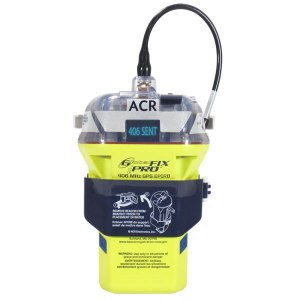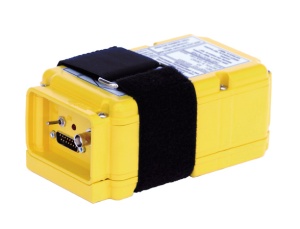5 quick buying tips NOT to miss
when buying a beacon from an online auction or personal on line listing!
- Know what beacon is right for the type of activity you enjoy doing. Read the guide below. (Boaters = EPIRB, Pilots = ELT, etc.)
- Find out if the beacon is Brand New and Unregistered or Used (Registered to previous owner). If the beacon is used and has been previously registered, the current owner will need to contact NOAA (in the USA) and notify them to cancel their registration so that the new owner can properly register it.
- If you are buying and EPIRB, Personal Locator Beacon or ELT that has a dedicated Lithium battery, ask for the battery expiration date. Know how many years are remaining on the battery before you buy it.
- Ask the seller for the country code in which the beacon is programmed. If the beacon is programmed for the United States and you live in Australia or a country other than the United States, your beacon will need to be reprogrammed for your country (a reprogramming fee will apply) before you can register it.
- Have a question?? – Contact the manufacturer before you purchase.
Understanding the Difference between Safety/Signaling and Survival Beacons
Emergency Position Indicating Radio Beacons (EPIRBs) – For Boaters
An EPIRB is a critical piece of last-resort lifesaving gear on your boat when you are out of range of a VHF radio, smartphone or other means of communication. EPIRBs are small radio transmitters, connected to a global government-run satellite network (Cospas-Sarsat), which is used worldwide to alert Search and Rescue agencies in the event of a dire emergency. Used only when all other means of rescue or communication have failed, these emergency beacons can be activated if your boat is in danger of sinking, or if you have a life-threatening accident or medical emergency.
EPIRBs are required to activate and transmit when they are removed from their brackets and immersed in water or manually activated in/out of the bracket. Category I brackets will automatically deploy the beacon when submerged between 3′ and 14′, while Category II brackets need to have the beacon released manually.
Personal Locator Beacons (PLBs) – For any outdoor enthusiast
Personal Locator Beacons, which use the same frequency and technology as an EPIRB, can be carried with you just about anywhere. They provide the same worldwide coverage as EPIRBs, and can rescue hunters, hikers, kayakers, climbers, pilots, boaters and most any outdoor enthusiast. PLBs are different from EPIRBs in some important ways. Their battery life (24hr. minimum transmit time) is often half that of an EPIRB. PLBs are not required to float or have a strobe light (but many do), and are manually deployed and activated. Like 406 MHz EPIRBs, PLBs have an additional 121.5MHz homing signal to help planes, helicopters and other searchers find you.
Emergency Locator Transmitter (ELTs) – For Aircraft
An Emergency Locator Transmitter (ELT) is an aircraft distress beacon that can be manually or automatically activated to transmit a 406 MHz emergency signal to the Cospas-Sarsat satellite system. ELTs that activate automatically use a “G-Switch” (gravity switch) that triggers the ELT when it senses that a crash has occurred. With ELTs, Search and Rescue teams may more easily pin-point the exact location of a downed aircraft. Section 91.207 of the Federal Aviation Regulations states that no person, as well as Part 121 operators and operations governed by Part 135, may operate a U.S. registered civil aircraft unless an approved automatic type emergency locator transmitter is attached to the aircraft. Similar regulations are established by aviation authorities throughout the world.
As of 2009, traditional 121.5 MHz ELTs are no longer monitored by satellite. The system has been replaced by a far more powerful and robust system operating on 406 MHz. When you upgrade your ELT to 406 MHz, you will have peace of mind knowing you can be found quickly in the event of an emergency or unplanned landing. If your aircraft currently has an older 121.5 MHz ELT it’s still important to have an upgraded 406 MHz ELT that can automatically transmit a distress signal with your location. Without upgrading your ELT, it can take days or sometimes weeks to locate a crash scene. Upgrading your ELT means rescuers will know within minutes that you’re in distress, who you are, and exactly where you’re located. This will drastically increase your chances of survival.
Why a 406 MHz Beacon is Your Best Last Chance
The biggest difference between an EPIRB/Personal Locator Beacon/ELT and other signaling devices is the built in redundancy required by Search and Rescue agencies to be included inside 406 MHz beacons before they can be approved for sale.
Main Frequency: 406 MHz, this dedicated Search and Rescue frequency is transmitted to the Cospas-Sarsat Satellites with your beacons Unique Identification Number which links you and your beacon together (if properly registered).
GPS: beacons with a built in GPS provide the exact search radius
121.5 MHz homing frequency: provides Search and Rescue forces with another tool to home in on your exact location.
Additional Benefits: 406 MHz beacons are regulated and approved worldwide by the Search and Rescue community before they can ever be offered for sale. These very strict regulations require an independent test lab to validate that the beacons meet the stringent requirements. These distress beacons are a directly link to Search and Rescue forces worldwide, there is no monthly subscription fees, no cost for activating and being rescued and no third party call center required to forward your distress signal onto the appropriate Search and Rescue Agencies.
Satellite Emergency Notification Devices (SEND) – For outdoor enthusiast
This is a relatively new category of distress beacons that have just hit the market in the past few years. While they have some very popular features, it is important to understand some of their limitations when it comes to Search and Rescue. The main thing to know is the lack of redundancy, most SEND devices rely solely on having a GPS position to transmit your position. If the device is unable to acquire your GPS coordinates because of heavy tree canopy or severe weather, Search and Rescue will not know where to look for you until the beacon is able to provide this information. SEND Devices also use commercial satellites such as iridium or GlobalStar, this requires an annual subscription to use. Forget to renew your subscription and your beacon will not transmit your emergency distress signal. Finally, because these are commercial satellites, the distress signal is first received by a third party call center who then must forward it on to Search and Rescue forces and be able to provide them with all of your vital information.
Understanding the Pro’s and Con’s of different Survival Communication Devices
| Product Type | Benefits | Limitations |
| EPIRBs |
|
|
| Personal Locator Beacons |
|
|
| Emergency Locator Transmitters (ELT) |
|
|
| Cell Phones |
|
|
| Satellite Phones |
|
|
| SEND Devices (SPOT, InReach) |
|
|
| GPS Receivers |
|
|
How to register
You may register by visiting the SARSAT Beacon Registration page.
There is no charge for this service. IT MAY SAVE YOUR LIFE.
For more information see the NOAA SARSAT Homepage.
